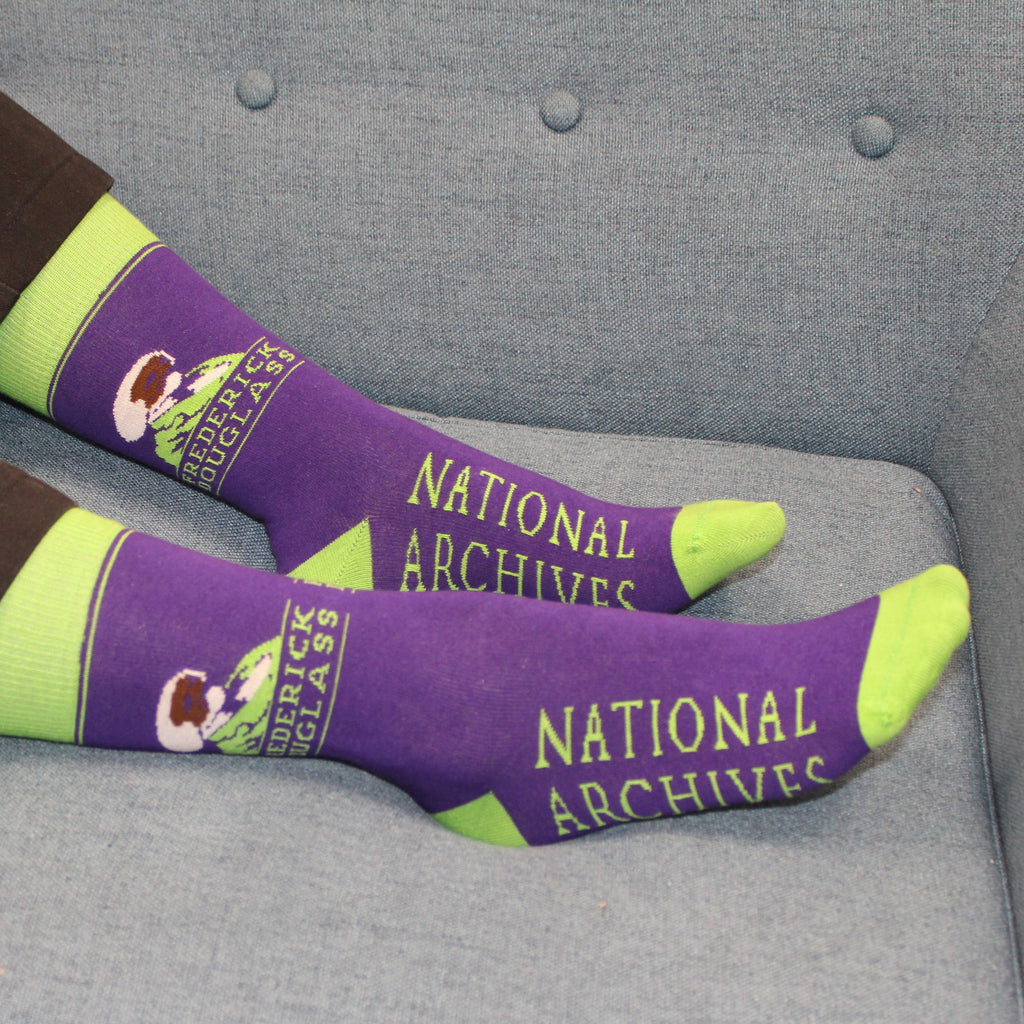
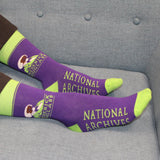
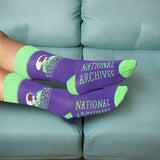
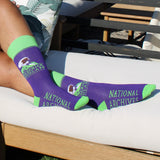


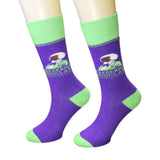
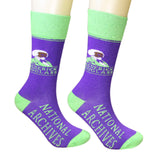
Frederick Douglass Socks
- National Archives Store Exclusive
- Made in the U.S.A.
- Toe seam
- One size fits most (ladies up to size 12, men up to size 10.5)
- 70% cotton, 28% polyester, 2% elastic
- Machine wash cool, inside out, tumble dry
-
These stylish and historically significant crew socks feature bright green accents that beautifully highlight the portrait of prominent African American social reformer, abolitionist, orator, writer, and statesman Frederick Douglass. Exuding his legendary determination and wisdom, Douglass' portrait is woven into the socks and shows him gazing intently ahead. A rich purple hue base color serves as a fitting background.
Expertly crafted in the U.S.A. with high-quality materials that ensure both comfort and durability, National Archives branding on the foot adds an official touch to their design and highlights the vast holdings of one of the world's most important archival institutions.
We invite you to look no further for a stylish way to pay homage to Frederick Douglass's enduring legacy and honor his contributions to American history. Our socks are perfect for history buffs, educators, activists, or anyone who appreciates both style and substance.
-
After escaping from slavery, Frederick Douglass became a leader in the abolitionist movement. The popularity of his speaking engagements led to the publication of his Narrative of the Life of Frederick Douglass, American Slave (1845), the first of his three autobiographies, in which he told the harrowing tale of his childhood as a slave, and for the first time revealed actual names and locations. Following a two-year (1845-46) lecture tour of Great Britain, Douglass returned to the United States, settled in Rochester, New York, and began publication of what would be the first of four newspapers: The North Star (1847-51), Frederick Douglass' Paper (1851-60), Douglass' Monthly (1859-63), and the New National Era (1870-74).
Douglass took an active role in the recruitment of African American soldiers for the Union Army, including two of his own sons. After Emancipation, he also campaigned actively for the Women's Suffrage movement, whose first public meeting in Seneca Falls, New York, he famously attended. After moving to Washington D.C. in the early 1870s, Douglass held a variety of positions in the federal government, including Minister-Resident and Consul-General to Haiti from 1889 to 1891.